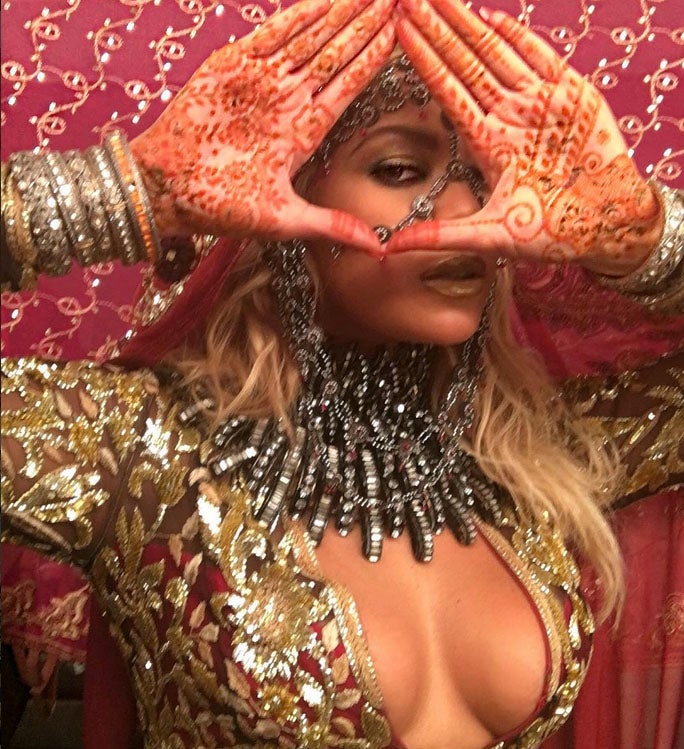
Beyonce’s latest instagram post showcases the palms of her hands intricately designed with what we now call “henna tattoo’s.” And, because everything that Queen Bey does turns to gold or goes viral, we thought we’d give you the skinny on the history and culture behind the Bey’s gorgeous—and temporary—new ink.
As a beauty editor of color, one of the primary things that drew me to the beauty industry—aside from a deep hunger to learn the art of perfecting my brows—was the heavy influence that culture has on beauty practices and trends around the world. For example, I love that creating winged liner with a kohl or kajal dates all the way back to 3100 B.C.E, when infamous Egyptian rulers like Queen Cleopatra would line their eye and serve as the catalyst for one of beauty’s biggest trends.
Across the pond, we are often left in awe of the beauty of Hindu culture. It’s no secret that Indian women are beautiful, but culturally, we’re all so fascinated by India’s beauty culture from the art of mehndi (henna) to their use of dazzling kundan headdresses. While the use of henna as a dye also has origins in Egypt, the art of mehndi or henna design is predominantly attributed to Indian and Pakistani culture. If you live in a metropolitan area or have ever been to a Middle Eastern wedding, then you’ve seen brides sporting gorgeous—and intricate— henna designs on their hands and feet.
Depending on the intricacy of the design, henna can take hours to complete, but generally only takes 15-20 minutes to dry. Once the redish-brown pigment is dry, it begins to crack, at which point the pigment is moistened and painted areas are wrapped in tissue to lock in moisture and body heat. After the areas are unwrapped, the pigment darkens in color over the next three days and the “tattoo” will last anywhere between 1-3 weeks. So, while Beyonce’s temporary ink looks simple and pretty, it was definitely a labor of love and a nod to the beautiful traditional hindu practice of mehndi.
